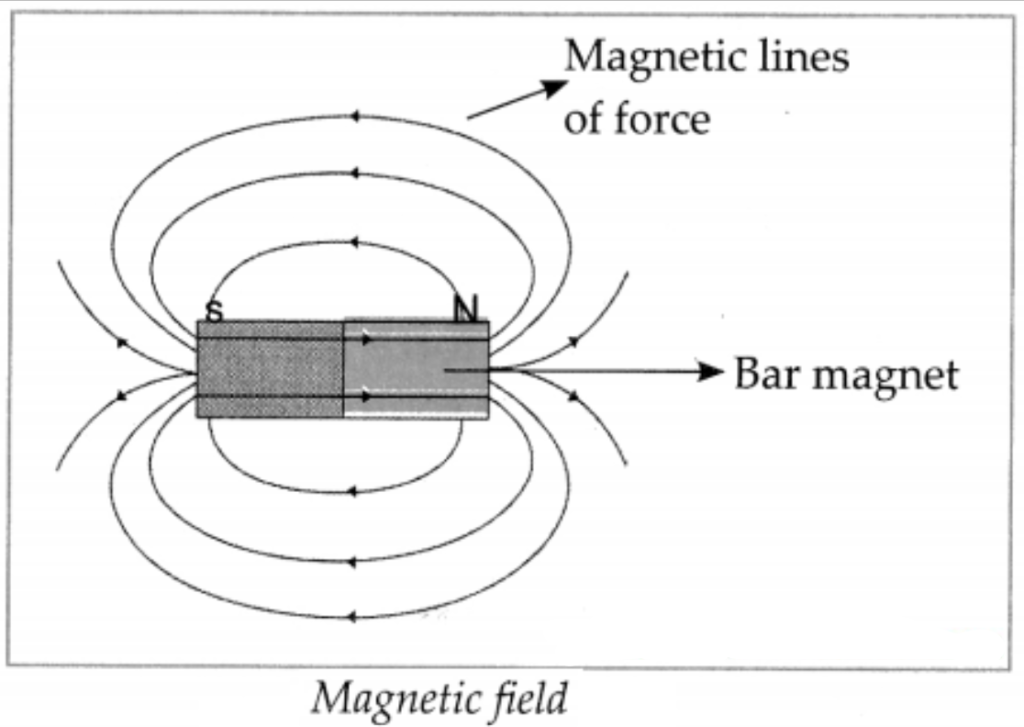1. Write the appropriate terms in the blanks:
a. The alloys called …………. and …………. are used for making industrial magnets.
Answer:
alnico, Nipermag
b. A magnetic field can pass through ………… and …………. .
Answer:
cardboard, bottle
c. The intensity of a magnetic field is indicated by the lines of …………. .
Answer:
force
d. The real test of a magnet is ……………… .
Answer:
repulsion
2. With whom should I pair up?
| Group ‘A’ | Group ‘B’ |
| 1. Compass | a. The highest magnetic force |
| 2. Door of a cupboard | b. Like poles |
| 3. Repulsion | c. A magnet |
| 4. Magnetic pole | d. A magnetic needle |
Answer:
| Group ‘A’ | Group ‘B’ |
| 1. Compass | d. A magnetic needle |
| 2. Door of a cupboard | c. A magnet |
| 3. Repulsion | b. Like poles |
| 4. Magnetic pole | a. The highest magnetic force |
3. Write answers to the following questions:
a. Distinguish between the two methods of making artificial magnets
Answer:
| Single touch method | Double touch method |
| 1. In this method, one magnet is used to magnetise the steel bar. | 1. In this method, two magnets are used to magnetise the steel bar. |
| 2. In this method, the magnet is dragged from one end of the steel bar to another end. | 2. In this method, two magnets are dragged from the middle of the steel bar to the opposite directions. |
| 3. As only one magnet is used to induce magnetism, this method is called single touch method. | 3. As two bar magnets are used to induce magnetism, this method is called double-touch method. |
| 4. The magnetism created by this method is of low strength and lasts for a short time. | 4. The magnetism created by this method is of high strength and lasts for a longer time. |
b. Which substances are used for making electromagnets?
Answer:
The substances used for making electromagnets are, an iron nail, insulated copper wire, one or more batteries and a pair of wire strippers.
c. Write a note on magnetic field
Answer:

- The region around a magnet where the magnetic force acts on an object is called a magnetic field.
- The magnetic field around a magnet can be shown by means of magnetic lines of force.
- The intensity of the magnetic field can be obtained from the number of lines of force.
- The intensity of a magnetic field is low where the lines of force are sparse and the intensity is high where the lines of force are concentrated.
- A magnetic field is the magnetic effect of electric currents and magnetic materials.
- The magnetic field at any given point is specified by both the direction and the magnitude.
- Magnetic fields are produced by electric current.
d. Why is a magnetic needle used in a compass?
Answer:

- The magnetic compass is the most familiar compass type.
- It functions as a pointer to magnetic ‘north’ the local magnetic meridian, because the magnetized needle at its heart aligns itself with the horizontal component of the earth’s magnetic field.
- A compass is an instrument used for navigation and orientation that shows direction relative to the geographic cardinal direction.
e. Explain with the help of a diagram how the intensity and direction of the magnetic field of a bar magnet can be determined.
Answer:

- The region around a magnet where the magnetic force acts on an object is called a magnetic field.
- The magnetic field around a magnet can be shown by means of magnetic lines of force.
- The intensity of the magnetic field can be obtained from the number of lines of force.
- The intensity of a magnetic field is low where the lines of force are sparse and the intensity is high where the lines of force are concentrated.
- A magnetic field is the magnetic effect of electric currents and magnetic materials.
- The magnetic field at any given point is specified by both the direction and the magnitude.
- Magnetic fields are produced by electric current.
4. Give detailed information about how the merchants of olden times used a magnet while travelling.
a. Give detailed information about how the merchants of olden times used a magnet while travelling.
Answer:
- The merchants of older times used a magnet whose north-south side was known.
- When the magnet is freely suspended, the north pole of the magnet settles in the direction of the geographic north pole of the earth.
- This is how the merchants come to know the directions while travelling.
- The idea for using loadstone in a compass first appeared in China.
- The first compass were made of loadstone, a naturally magnetised ore of iron.
- The Chinese used “south pointing spoon” which when thrown upon the ground comes to rest pointing at the south.
- Then the transition was made from loadstone spoons to iron needles.
- In the medieval period a magnetic needle in the shape of a fish, floating in the bowl of water was used as a compass, pointing south.
- It was called floating compass.
- In the twentieth century, liquid filled magnetic compass began to appear.
- There is a lesser known compass called dry mariners compass.


